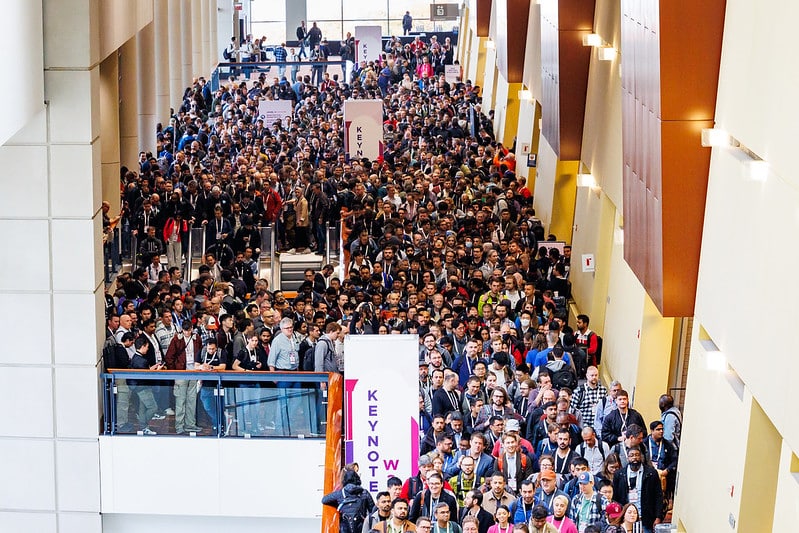
The Move to Closed Source: RobustCloud had previously written about Hashicorp’s unexpected shift of Terraform’s license to the Business Source License. Under the auspices of the Linux Foundation, a fork named OpenTofu resulted, and the CNCF-hosted OpenTofu co-located event was packed. At the same time, HashiCorp lost its co-founder and is reportedly looking for a buyer, leading to customer uncertainty.
During the conference on March 20th, Redis Labs announced it is adopting a dual-source licensing model with RSALv2 and SSPLv1. This model will allow continued unrestricted use of the source code while requiring cloud service providers to obtain a commercial license. While Microsoft committed to a license from Redis Labs, the reaction from the Linux Foundation was swift in forming Valkey, an open-source alternative to the Redis in-memory, NoSQL data store. With support from major cloud service providers, including Amazon Web Services (AWS), Google Cloud, and Oracle, it remains to be seen if Valkey will win the battle for future innovation.
The Cost of AI: Users of AI, ranging from enterprises to startups, must keep a close eye on costs to ensure that the profitability of delivering AI services holds up the business model. During the conference, it was evident that AI workloads ran on Kubernetes. An open-source add-on to Kubernetes called Karpenter is an auto scaler that monitors workloads and adjusts cluster sizes appropriately. Since its announcement in 2021, Karpenter’s use has expanded into AI, with customers like Anthropic demonstrating a 40% cost reduction of AWS spending using the add-on. Another AWS customer, Grafana Labs, showed how they run services on every hyper scaler but migrated from the Cluster Autoscaler to Karpenter due to the ability to control the optimal nodes for the workload to run on.
With the success of Karpenter, other cloud providers will likely develop and deliver similar tools. As companies evaluate retiring on-premise workloads and moving them to the cloud using Kubernetes, Karpenter can assist in better resource utilization and reduced costs.
Kubernetes Since 2014: At the last day’s keynote, Bob Wise, CEO of Heroku, reminisced about the beginnings of cloud-native from Docker and Kubernetes being open-sourced and the launch of the Cloud Native Computing Foundation (CNCF) in July 2015. Bob also gave a shout-out to Dan Cohn, who shepherded the Open Container Initiative to develop open standards for container formats and runtimes.
One service Bob mentioned was the Amazon Elastic Kubernetes Service (Amazon EKS) launched in 2018, which he credited to CNCF’s open governance model. An interesting observation is that although Amazon Web Services (AWS) was the last among hyperscalers to offer a managed Kubernetes service in 2018, AWS had more global container workloads than any cloud provider in 2021 (Source: CNCF Annual Survey 2021). The success of Kubernetes on AWS reflects the desire of app developers to build and deploy modern application architectures on an abstracted infrastructure.
Later in the keynote, Solomon Hykes, the CEO of Dagger.io, spoke about the future of application delivery in a containerized world. He covered the launch of Docker in 2013, which initiated the container revolution. However, the journey included a Platform-as-a-Service (PaaS) offering that has evolved into hyperscalers dominating the container market with a comprehensive collection of services. Before embarking on an application development journey, developers now choose the best services that solve specific business problems. As a result, infrastructure as a service is less relevant, and cloud providers are selected based on the variety of services available to the developer.
Conclusion: KubeCon EU 2024 highlighted significant shifts in the cloud-native landscape, including licensing changes and using Kubernetes as the primary delivery mechanism for AI workloads. The trend toward closed-source licensing models raises questions about the future of open-source collaboration, motivating the formation of projects like OpenTofu and Valkey. The collective response to closed-source transitions reveals a strong community inclination towards open-source solutions, underscoring the resilience and adaptability of the cloud-native landscape. At the same time, the conference highlighted the crucial role of cost management in AI deployments, with open-source tools like Karpenter emerging as essential for efficiency. As Kubernetes continues its rapid growth across cloud providers, its success mirrors the broader shift towards abstracted infrastructure and developer-centric solutions. Looking ahead, the cloud-native ecosystem promises continued innovation, with the challenge for developers lying in choosing the best combination of services to address their unique needs.
